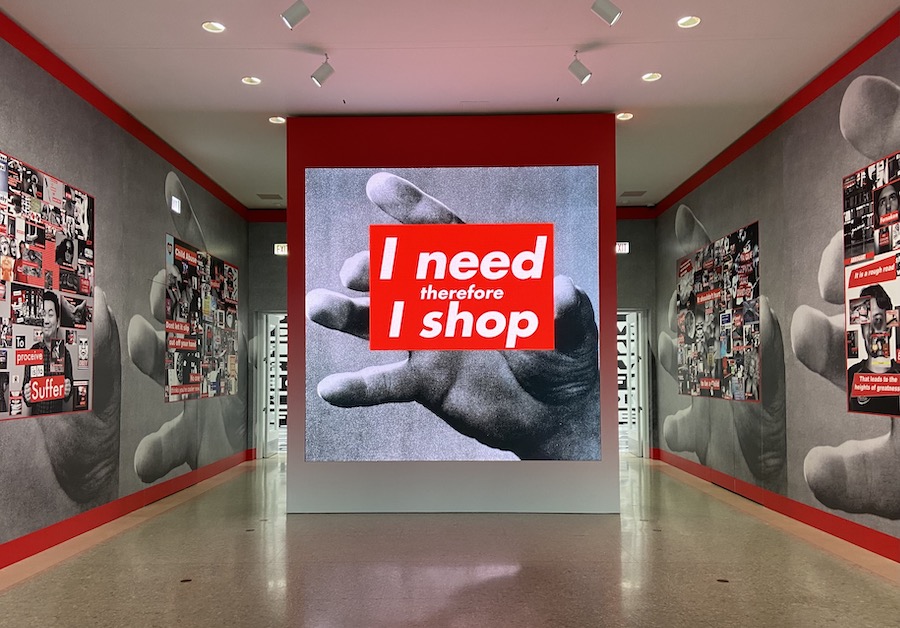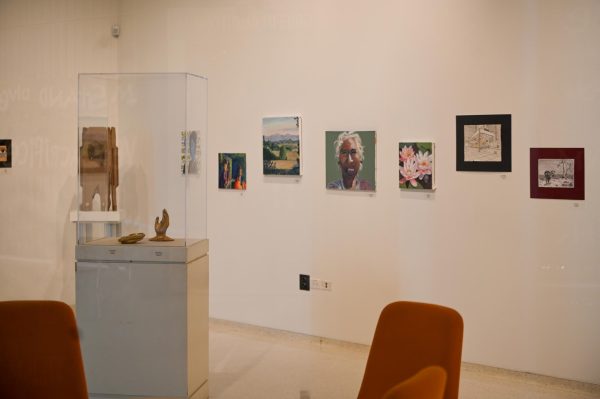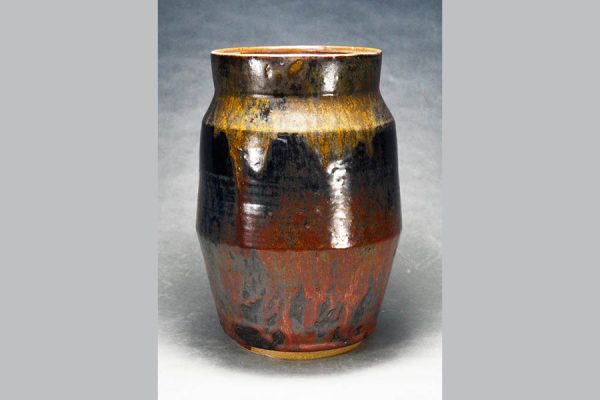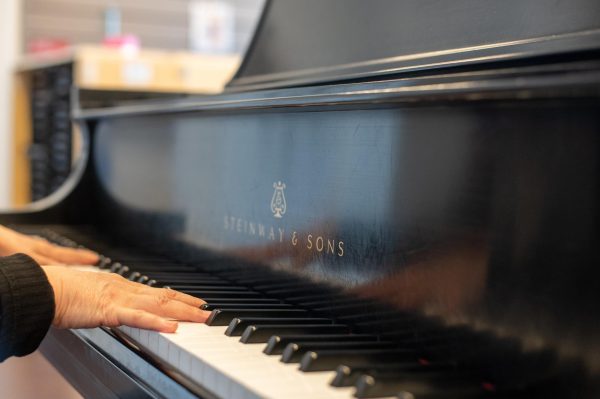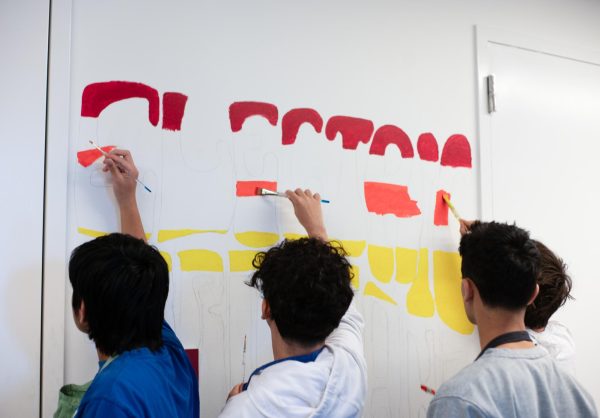Barbara Kruger’s art invites society to reflect
Barbara Kruger’s art exhibit at the Art Institute of Chicago is filled with oversized instillations of text-heavy graphics, photography and visuals. Visitors can walk through the room to observe the surrounding art, composed primarily of contrasting shades of gray and red.
A room filled with text. White-on-black and black-on-white letters cover all four walls. Text on the floor reads, “‘If you want a vision of the future, imagine a boot stamping on a face forever.’ George Orwell.”
Barbara Kruger’s installation exhibit “Thinking of You I Mean Me I Mean You” at the Art Institute of Chicago heavily incorporates text in room-sized works offering insight into modern issues such as consumerism, identity and narcissism.
The exhibit, which opened Sept. 19 and continues through Jan. 24, 2022, features art of many mediums: prints, photography, film, audio and collage. Much of the art pieces filled the space they were in, forcing the viewer to absorb the message conveyed by the text. The films were some of the most powerful pieces of the exhibit featuring a mix of dark humor, popping visuals and provocative messages. The exhibition also featured some of Kruger’s earlier work featuring photographs of famous artists.
Ms. Kruger began her career in graphic design for magazines and photography editing. In the 1960s she began writing her own poetry.
Despite Ms. Kruger having been creating art for galleries since the early 1970s, her contemporary work is still relevant to the current problems seen on social media today. With the ever-shifting landscape of modern culture, the exhibit manages to convey relevant ideas. Many of the works also contain undertones of protest. The words seem to be shouting from the walls as not only a message but a call to action.
Another thought-provoking feature in the exhibit was a “selfie room” designed for visitors to take photos of themselves in front of a wall reading “I hate myself and you love me for it.” The twist is that a large security camera on the ceiling sends the feed from the camera to a phone-sized screen in the lobby of the museum.
Ms. Kruger’s art is not subtle and does not disguise the message in the visuals, yet the text is somewhat open to interpretation by the viewer.
The exhibit fills the Regenstein Hall, the museum’s largest exhibition space. However, while some of the artworks went from floor to ceiling and wall to wall, others left some of the rooms feeling vacant and empty with Ms. Kruger’s popping text made smaller by the unfilled walls around them.
Despite this, Barbara Kruger’s “Thinking of You I Mean Me I Mean You” is an impressive display of artwork that can be appreciated by anyone and allows for reflection by the viewer on the problems of today.



